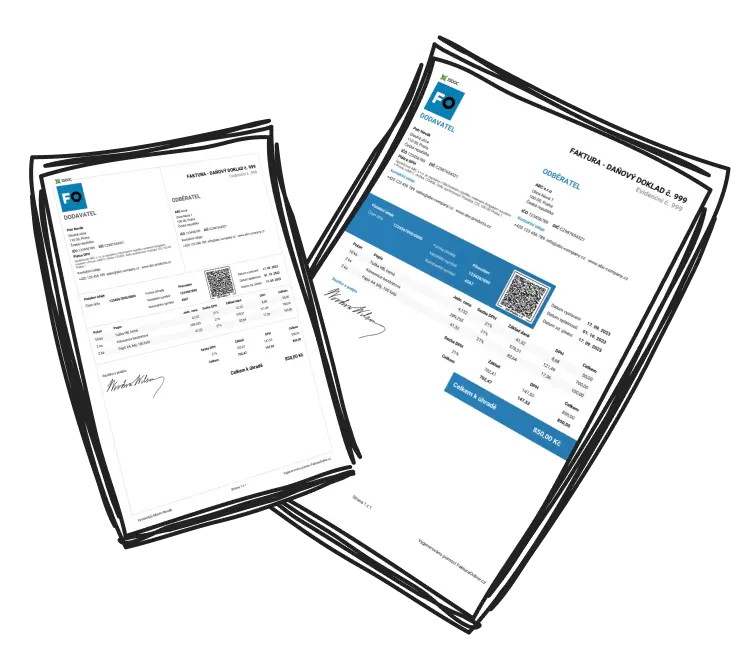Many small businesses across the UK wrestle with late payments and invoicing blunders. Adopting automatic invoicing can be a game-changer, enhancing cash flow management and reducing errors.
An automatic invoice is generated through digital accounting tools. These invoices are:
Automatically generated and issued to clients following a predetermined timetable.
Tailored with templates containing client data, descriptions of goods or services, and payment deadlines.
Set up for one-off or recurring billing needs.
By automating invoices, business owners in Britain free up time, minimise human error, and keep billing processes reliable.
Operating Auto Invoices: A Comprehensive Guide
Understanding how auto invoices operate can reveal how effortlessly you can streamline your invoice procedures with automation solutions.
Select Suitable Software
Opt for platforms like QuickBooks, FreshBooks, or Xero that are cloud-based and support automation, matching your enterprise's requirements.Establish Customer Profiles
Input details such as client names, contact details, payment methods, and terms.Design and Personalise Invoice Formats
Incorporate your business logo, contact details, goods/services breakdown, relevant taxes, and due dates.Create Automation Triggers
Set automation based on actions like fulfilled orders or achievement of project milestones, or set recurring schedules such as monthly for subscriptions.Distribute Invoices Automatically
The software generates and emails invoices upon the trigger's execution.Chase Up Payments with Reminders
Set the system to send reminders for outstanding invoices at predetermined intervals.
The Importance of Auto Invoices for Small Business Owners
Numerous small enterprises lose revenue due to neglected or postponed invoices, but auto invoices can avert this by automating the billing procedure.
Auto invoices are essential for small firms as they:
Conserve time: Automate recurrent billing activities, freeing up your timetable.
Mitigate errors: Reduce mistakes such as discrepancies in totals or omitted data.
Guarantee punctual payments: Dispatch invoices more reliably with built-in reminders.
Enhance professionalism: Portray a consistent and polished image to customers.
Automation helps you avoid such inefficiencies.
How to Set Up Auto Invoices: A Step-by-Step Process
Even those not well-versed with technology can establish this quickly using the following guide.
Select an Appropriate Invoicing Tool
Consider popular tools like QuickBooks, Wave, or Zoho Invoice. Select one tailored to your business size and objectives.Compile a Client Database
Enter all client information, inclusive of names, contacts, and preferred payment conditions.Customise Your Invoice Format
Include your brand logo, itemised services or goods, due dates, and payment options, ensuring a clear and professional layout.Determine a Billing Schedule
Decide on the frequency of invoicing (e.g., weekly or monthly) and set appropriate dates.Link Payment Systems
Integrate systems like PayPal or Stripe for ease of customer payment.Conduct System Testing
Dispatch a few trial invoices to validate their accuracy and performance, making adjustments as necessary.Conduct Regular Audits
Regularly review the system to ensure configurations match your invoicing demands.
The Perks of Auto Invoices for Small Firms
If you're striving for greater time management and consistent cash flow, automatic invoices serve as the ideal remedy, maximising your financial operations.
Accelerated payment processing: Clients can settle accounts directly through integrated systems.
Enhanced client relationships: Consistent, professionally dispatched invoices foster trust.
Reduced repetitive tasks: Automation curtails manual workload.
Less error-prone: Improve reliability with exact calculations and proper formatting.
Simple tracking: Effortlessly monitor unpaid and outstanding invoices.
Optimised financial planning: Organised records facilitate smoother tax preparation and budgeting processes.
Conclusion: Why Auto Invoices Are Indispensable for Your Company
Cease spending countless hours on manual billing—embrace automation now.
Auto invoices not only save time and minimise errors, they also accelerate payment and bolster your professional presence. Whether you're a nascent startup or a well-established small firm, this tool is crucial for optimising financial administration and freeing resources to pursue growth. Don't hesitate—modernise your invoicing methods today!


